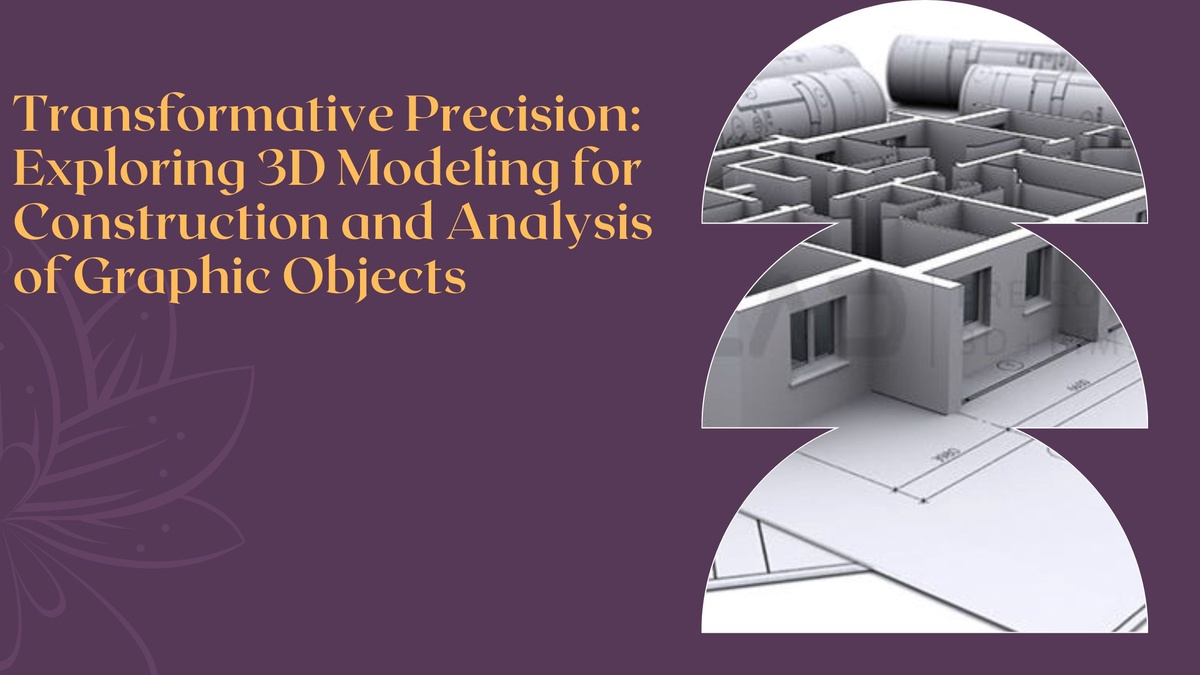Introduction:
In the realm of digital design and visualization, 3D modeling stands as a revolutionary method, offering architects, engineers, and designers a powerful tool for constructing and analyzing graphic objects. With its ability to breathe life into concepts, streamline workflows, and enhance analysis, 3D modeling has become an indispensable element in various industries. In this exploration, we delve into the realm of 3D product modeling, unraveling its significance and transformative impact on construction and graphic object analysis.
Defining 3D Modeling:
At its essence, 3D modeling is a digital technique that involves the creation of three-dimensional representations of objects or spaces using specialized software. It enables the development of virtual models with depth, allowing for a more realistic and comprehensive understanding of the subject.
Construction of Realistic Visualizations:
3D modeling serves as a dynamic tool for architects and designers to construct realistic visualizations of their concepts. Whether it's an architectural structure, a product design, or an industrial component, 3D modeling allows for a detailed and accurate representation that aids in conveying ideas with precision.
Streamlining Design Workflows:
The iterative nature of 3D modeling accelerates design workflows. Designers can rapidly prototype and refine their ideas, making adjustments in real-time. This agility enhances creativity and ensures that the final design aligns closely with the envisioned concept.
Enhanced Product Development:
In industries such as manufacturing, 3D product modeling plays a crucial role in the development process. It allows for the creation of detailed prototypes, facilitating better visualization and analysis of product designs before they move into production.
Architectural Visualization and Planning:
Architects leverage 3D modeling to create detailed visualizations of architectural designs. These visualizations aid in communicating design concepts to clients, stakeholders, and team members, fostering a shared understanding of the project.
Simulation and Analysis:
3D modeling facilitates simulation and analysis, enabling professionals to assess various aspects of a design. This includes structural integrity, fluid dynamics, lighting scenarios, and other factors that contribute to informed decision-making during the design and planning phases.
Interactive Presentations:
3D models bring a level of interactivity to presentations. Whether showcasing a new product, an architectural design, or an industrial concept, interactive 3D presentations engage audiences and provide a more immersive experience.
Virtual Prototyping in Product Design:
For product designers, 3D modeling enables virtual prototyping, allowing for the creation and testing of product designs in a digital space. This process minimizes the need for physical prototypes, reducing costs and expediting the product development cycle.
Cross-Industry Applications:
The versatility of 3D modeling extends across various industries, including gaming, animation, healthcare, and education. Its applications are diverse, demonstrating its adaptability as a tool for creating and analyzing graphic objects.
Precision in 3D Product Modeling:
The precision achieved in 3D product modeling is a hallmark of its efficacy. Designers can specify dimensions, textures, materials, and other intricate details, ensuring that the virtual model closely mirrors the intended real-world product.
Conclusion:
In the contemporary landscape of design and visualization, 3D modeling stands as a beacon of innovation, transforming the way we construct and analyze graphic objects. From architectural marvels to intricate product designs, the precision, versatility, and efficiency of 3D modeling make it an invaluable asset across diverse industries. As technology continues to evolve, so too will the capabilities of 3D modeling, shaping a future where the digital realm seamlessly aligns with the intricacies of the physical world.


No comments yet